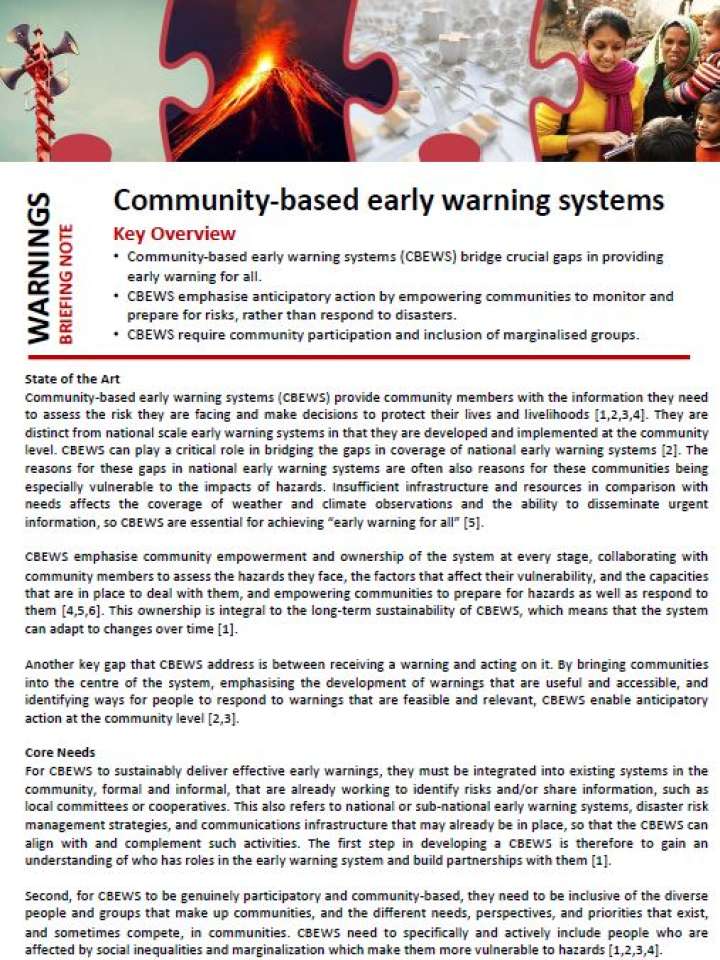Community-based early warning systems
This brief explores community-based early warning systems (CBEWS) characteristics and provides a related case study from Nepal. CBEWS bridge crucial gaps in providing early warning for all. The reasons for these gaps in national early warning systems are often also reasons for these communities being especially vulnerable to the impacts of hazards. Insufficient infrastructure and resources in comparison with needs affects the coverage of weather and climate observations and the ability to disseminate urgent information, so CBEWS are essential for achieving "early warning for all".
For CBEWS to sustainable deliver effective early warnings, they must be integrated into existing systems in the community, formal and informal, that are already working to identify risks and/or share information, such as local committees or cooperatives. This also refers to national or sub-national early warning systems, disaster risk management strategies, and communications infrastructure that may already be in place, so that CBEWS can align with and complement such activities. The first step in developing a CBEWS is therefore to gain an undertanding of who has roles in the early warning system and build partnerships with them.
Explore further
